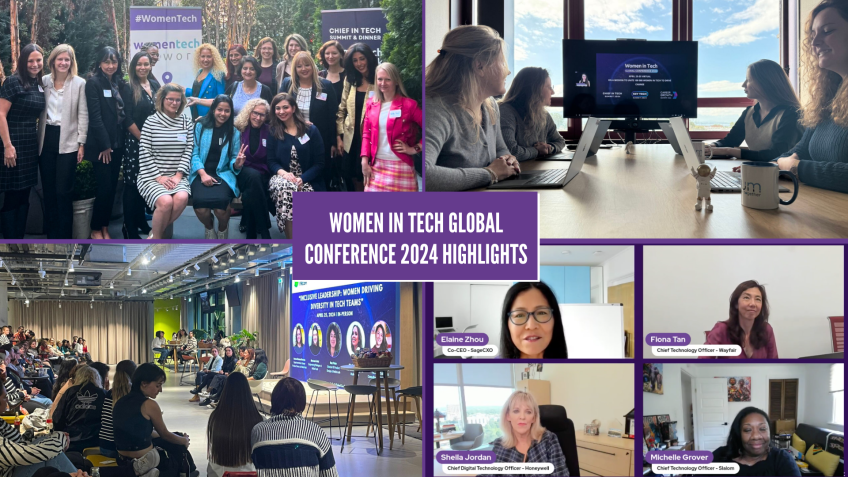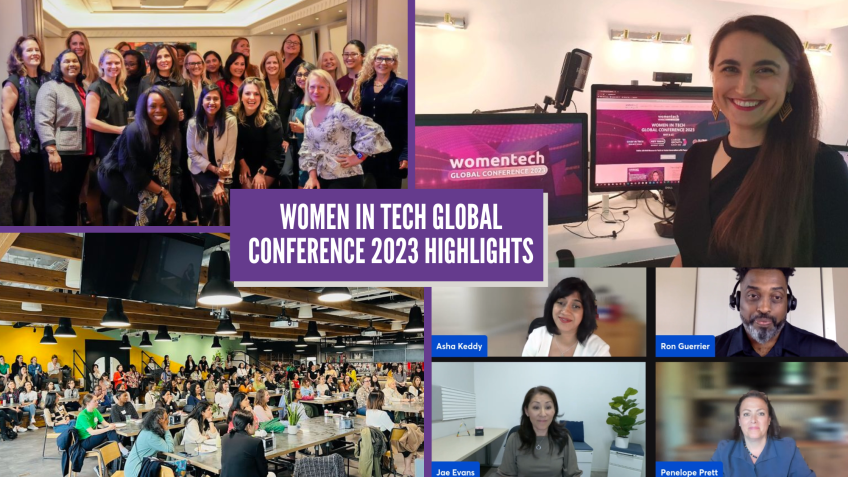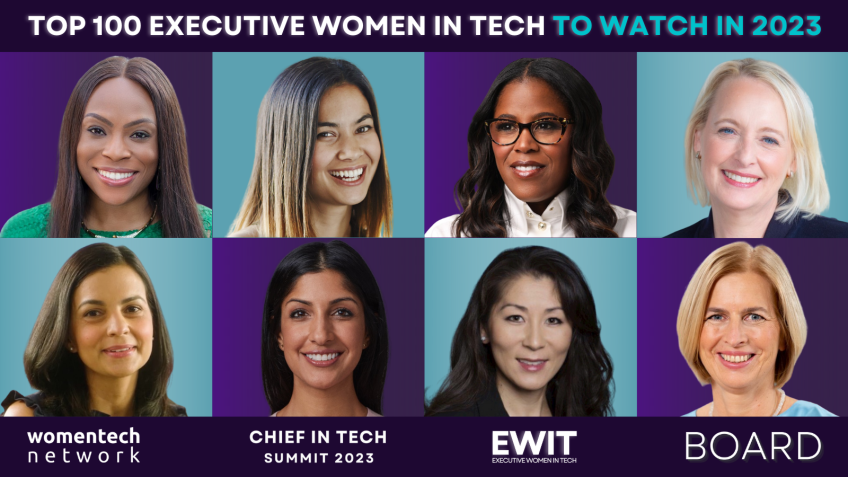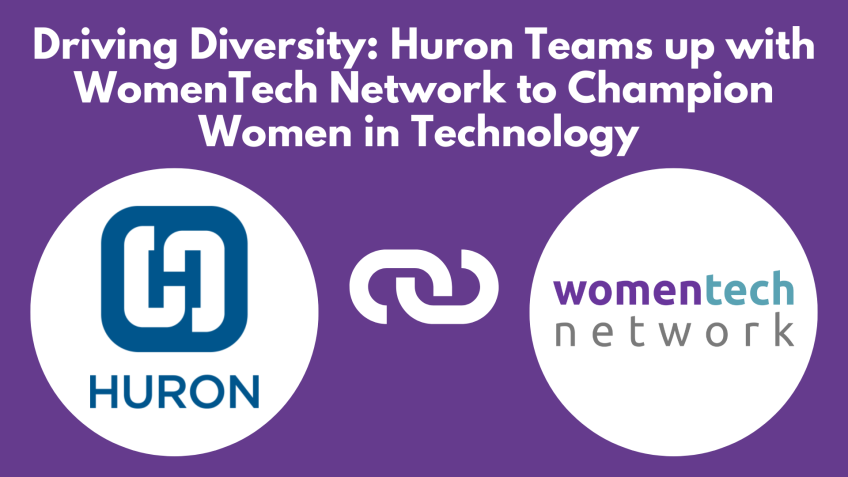The benefits to the organisation of doing business right - Diversity
Dr Jennifer Martin
Executive Director, Executive MBA ProgrammeThe Importance of Diversity in Organizations
A hot topic in many businesses today, diversity is proving to be key for the growth and success of organizations. Beyond enhancing the workspace environment, embracing diversity opens doors for innovation, performance, and increased profits. In this article, we'll explore why organizations should prioritize diversity, the benefits they stand to reap, and the policies and programs to set in place for encouraging diversity.
The Case for Diversity
Generally, people introduce themselves through a list of qualifications, work experiences, and voluntary roles but overlook their diversities. Our diversities are part of our unique identities that we bring into the workspace. In a working environment, talking about our diversities fosters an atmosphere where not just the individual, but others feel safe, accommodated, and are able to thrive. Good diversity practices imply creating an inclusive family environment where individual differences are respected and used to drive collective growth.
Benefits of Diversity in the Workplace
Businesses have a variety of reasons why they choose to focus on diversity:
- It is a basic need, a moral and ethical value that is fundamental to how businesses and organizations function.
- There is a business case for diversity, as it leads to the creation of social good and, by extension, benefits society.
- Diversity in the workplace leads to the creation of a comfortable environment where people feel like they can be their true self. This environment encourages people to share and innovate more freely.
Diversity and Innovation
Research shows that businesses that prioritize diversity tend to be more innovative. For instance, the gender composition of top management teams can add significant value to the company's innovation drive. Companies with above-average diversity scores reap a higher return on investment and turn out higher innovation revenues. In essence, companies that focus on diversity have 90% more innovation revenues, show 35% better performance over their homogenous counterparts, and are 36% more profitable.
Diversity and Skills
A diverse workforce brings a range of cognitive resources and structures. Challenging the "usual way things are done", diversity brings new perspectives and value-adding ideas from different walks of life. Apart from creating diversity, including and listening to everyone plays an essential role in growing a business.
Diversity and Performance
Research shows that diverse teams outperform non-diverse teams by 35%. Companies with over 30% female executives outperform those with less by 30%, and companies in the top 25% for ethnic and cultural diversity are about 36% more profitable than those in the bottom 25%. Hiring more disabled people can significantly boost the economy, with the US GDP receiving a $25 billion boost if only 1% more disabled people were hired. These numbers show that gender, ethnic diversity, and disability inclusion are beneficial for performance, innovation and profitability.
Recruitment and Retention
The recruitment and retention of diverse talent are essential strategies for businesses. Incorporating diversity-focused programs or initiatives, such as self-managed teams or diverse mentors, increases diversity representation. For instance, the Harvard Business Review showed that such programs positively impact over 800 mid-sized US companies.
Gender and Leadership
Women in top leadership roles are still underrepresented in various sectors, but particularly in tech and start-ups. Advocating for gender balance and measuring companies' progress towards this goal provides a clear correlation between gender diversity and better business performance.
Conclusion
Diversity is not merely about filling quotas; it goes beyond that. It's about fair recruitment processes, interrupting biases, considering the company culture, and using inclusive language to attract the right people. Most importantly, learning about diversity and inclusion should be ongoing processes for all organizations. As businesses and organizations strive for diverse work environments, they not only foster a sense of inclusivity but also drive innovation, performance, and profitability.
Video Transcription
Of organizations. Um And why they should do, why they should take care of diversity, what the benefits are for them as an organization.So we're just gonna talk through the business case, we're gonna talk through a few of the elements of diversity and then we're gonna talk about policies and programs. So thank you all. I can see there's a, a few of you in there now. Um So a lot of the time we introduce ourselves as a list of qualifications, work experience and voluntary roles. Now, we could talk about our backgrounds and what we're, you know, what we bring to the table in terms of experience. But what I hope that we'll be able to move into a little bit more in the future is talking about our diversity. So we don't normally introduce ourselves, biodiversity. We talk about our experience, our roles, our qualifications, but actually, we bring a lot to the table. And so here you can see, I'm sort of introducing myself and my diversity. I hope some of you should, you can feel like you can also do that in the chat and choose who you are. It's about trying to make sure that we feel safe though. And in a working environment, it's really important that we are able to feel safe to talk about who we are and our diversity in order to feel accepted to be accommodated, but also to accommodate others so that we can adapt and to thrive.
So I often sort of talk about my own neurodiversity. I talk about uh the differences with my Children and then how, how we try to create an inclusive family. And so I think that's really important that we start having these conversations in a business setting so that we all feel comfortable about who we are. And that really is so that we can be more authentic leaders. We need to be able to rethink who we are as a leader and who we want to be, how we can increase our self awareness so that we can be better leaders. We need to be able to assess our values, our likes, our dislikes our beliefs and how that sort of fits together with our leadership perspective and how we do that in a business setting. We need to be able to take action on that. Understand our biases, learn what makes us make certain decisions. And all of this is to help work on our effective communication. And you can see in this graph by the center of creative leadership, it's all about working out who you are and who you want to be as a leader in order to develop and to take things forward.
So today, we're looking at diversity and we're looking at why we should focus on it. Everyone knows that there are moral values, there are ethics. So, you know, it's about respect and philosophy that is just a basic need. But what I try to do um in the research and the work that I do at the with the University of Cambridge is try to take it one step further. So we all know that it's a, a moral good, it's an ethical value. It's things that we are proud that we can say they make up who we are, but equally at a university level, we try to take it that one step further. There's that responsibility of a university for a social good. So we've moved on from moral good. Um And something we should all try to strive to in terms of taking care of diversity. But in a university setting, we're trying to create that social good. So we're trying to benefit society. And when you take that forward into a business setting, you're trying to bring your true, authentic self as a leader through into your work and trying to support your coworkers. And what that then means is that when people are comfortable, they are more likely to share, they are more likely to innovate. So this is what we're going to be talking about today. And you can see that demonstrated here by the Liz Fossen um chart as well.
People are more likely to collaborate when they feel like their diversity is being recognized, it's being adapted or it's being supported and they feel like they can be their true self at work. There are lots of elements to diversity. Um As you can see by this graph, I have hundreds of these types of graphs looking at different types of buckets and different types of diversity. But we're looking at it from a job uh industry, a function level, we're looking at it from our own sort of personal level in terms of nationality, religion. These are the things that we typically think of when we think of diversity, but also our educational background, our work experience, our marital status, our parental status, coherence, and then you go into the things that are most typically associated with diversity. So race, ethnicity, sexual orientation age, there are lots of elements to consider and it's about making sure that everyone feels comfortable in their workspace so that they can bring their true self to work. We started off and I'm just giving you a sort of a brief background into diversity. A lot of people talk about ed I, so equality, then divers diversity and then inclusion and looking at it across those sort of scopes.
I think this is depending on the academics that you speak to, this is has kind of been sidelined, it's kind of been taken forward and now we look much more at DE I. So we look at diversity and we've swapped equality there for equity. So instead of giving people equal access, we're about trying to give people access. So they have the same experience and the same level of learning. And then you've got the inclusion there, which is very important in order to once you've recruited the right people to make sure they feel included in the process. Now, I'm speeding through all of this, but please do put any comments or questions in the chat because there's a lot to cover and I want to get through everything. But you're welcome to reach out to me directly as well. So when we're looking at those definitions, obviously that equality versus equity is a really important topic because equality is about giving everything evenly distributed so that everyone can theoretically get equal access. But actually equity is about moving it, moving it so that people can actually achieve that access and can then get equal access. But wherever they are on that level and access.
So I'm sure many of you have seen these charts before and I do like to share them because I think it just brings us all onto that same playing field. Another graph that's very common in the industry is looking at how you can adjust those, those boxes to give people that equal access. So this is a really lovely visual that shows you the difference between equality and equity in particular often what the reality sadly is, but then how you can be liberated and how you can really support people. So they get the same equal in this case, access and view to an environment. When you look at the academy to innovate, hr they really sort of try to take that back into the business setting, which is what we're doing today. We're looking about how a business can be accountable, how they can truly include workers, how they can really hear how they can listen and how they can make those conscious efforts. And I think that's what we're really looking at today is why, what are the benefits for organizations to really take on diversity and really run with programs and support to give people really equitable access so that they can benefit and they can achieve and how that drives forward an organization.
So first of all the reasons for balancing out that diversity is trying to get that legitimacy. It really helps people and businesses grow. So you can see here the effect of gender diversity and announcements of tech companies can have a massive effect. So with a tech company, if two companies were released on the same day and one had 30% women and one had 20% women, you could expect that the actual points that they would go on to the stock exchange would be a whole point higher because people value that diversity and people really want to see that in their businesses and organizations, whether they're investors or whether they are organizations that are trying to collaborate.
So you can see here, it's part of the ESG movement, which we are all seeing and experiencing a lot in our businesses and companies are stopping from collaborating or clients are stopping from choosing companies that do not have that diversity at their com uh at those choice companies.
So you can see here in the Bloomberg law, a lot of people choosing to not pay fees or to not choose partic working with particular law companies in order to make sure that those companies are really representing the people that they are trying to support and to recruit. The second element. Here is the fact that businesses that focus on diversity are generally more innovative. So you can see here the effect of gender composition and top management companies, how that has added value to the firm in the millions um often because of those higher innovation intensities in those firms. So you can see here companies with below average diversity scores and how they rate on the innovation revenues uh revenues compared to companies with an above average diversity score actually getting a much higher return on investment and in value from those companies. And this is from the BC G um BC G da diversity data. So you can see from lots of the sources we're looking at. This is another Harvard business case review and mckinsey research that companies that focus on diversity in the workplace receive on average 90% higher innovation revenues, 35% performance over their homogeneous counterparts and 36% more profitable.
Now, that's often the one at the end there that most people sort of twig, the fact that actually companies that are focused more on diversity do see a bigger value in terms of their revenues and in terms of their bottom line. So there are many benefits for this right from a business setting, which is the case that we're building today. Moving on to that third area of benefit for focusing on diversity is the skills. So bringing in that breadth of cognitive resources and depth of cognitive structures, the different ways that people think they value, they take perspectives and lenses. It's all really important in terms of driving forward a business and ensuring that you're getting those different contributions.
It's not just about bringing them into your organization, but it's about including them and listening to them and actually making sure that you are helping drive forward the business and that people feel like they're comfortable and able to do that the fourth area would be performance.
So the benefit that diverse teams out form non diverse teams, 35% can compared to their counterparts, which is massive when you think about how businesses have been performing for decades. If you can increase your diversity, this could really have an impact on how your team performs and actually how they deliver their projects. Companies with more than 30% FEMA executives are more likely to form those with less by 30%. That again is huge and that can really help a business, it can make or shape of a business and how it grows. You can also see their companies in the top 25% for ethnic and cultural diversity are 30% 36% on average, more profitable than those in the bottom 25%. So you can see that this hits the economy in terms of the US GDP, for example, 25 billion, if just 1% more disabled people were hired. So whether you're looking at gender, whether you're looking at ethnic diversity, um disability, there are so many reasons to include people from all of these different backgrounds.
It brings that innovation, it brings a performance and as you can see, it can definitely benefit society and the businesses bottom line, which is what we're looking at here. So the business case for diversity is really strong as you can see here. So by ethnic diversity, 36% higher likely returns when diversity is a strong part of your organization. So really do think about both that gender diversity as well as that ethnic diversity as those minimum. KP I si mean, we should be looking at all types of diversity and I can't cover everything in this 20 minutes, although I would have loved to, but it really does show that these are the two focuses that are most businesses minds at the moment. But then we move on to disability, we move on to age, we do um move on to neuro diversity, all areas that can really support a business in growing in terms of innovation, performance. Um And obviously here, we're looking at financial performance but that profitability, you can see that there's a real correlation between ethnic diversity and profitability as well here. So you can see there are lots of reasons for this growth. So just thinking about how we can sort of tackle that.
And here you'll see on the left hand side is a list of different types of programs that you might as a business leader want to focus on in order to try to support the diversity that you have in your organization. And you can see here the benefits of some of these programs by this particular Harvard Business Review case of over 800 mid-sized companies in the US. So you can see here that actually by self managed teams as a sort of step. But actually, if you go to self manage teams in Asian women, there's a more, there's a bigger step there, you can see the influence. And so the idea of this chart is very much to show you that by focusing in on mentoring diversity, diversity managers to support um college recruitment programs aimed at very specific groups of people. You can have a really positive impact on getting the results in from diversity and making sure that you've got the right people on board in your organizations. Now, obviously, this is the women in tech conference and I hope you are enjoying the other sessions that you are joining today, looking at the state of women's leadership in particular, I get to focus a little bit on gender today, which is something I definitely enjoy doing in these presentations.
You can see here that there is a very small section of women that are in the top leadership positions depending on the industry. Obviously, we see a lot more there towards the health care and the public schools at the other end. But when you keep moving backwards towards the tech and the unicorn start ups and the energies, we represent a much smaller population. And that's something that as we are starting to be able to measure those companies and to measure where you have got that gender balance or you have got more of uh gender representation in those companies, you are seeing those bigger returns. So it's definitely something that companies are starting to really wake up to and really start to focus on. You can see here, it doesn't just impact the GDP. But on the left hand side, you can see there the countries that have got a high representation of women in the workforce. And how that does impact the GDP positively, particularly by having more of a gender balance there. And when you take that back to a business in organization, some of these big businesses, it can save you £8 million or $8 million. Sorry, in this case, for companies employing 50,000 employees.
So the idea that actually by retaining women, we're seeing people are leaving in their droves um particularly since COVID, when we've seen more and more people, more and more women taking on um caring, extra caring responsibilities, we are seeing that people are choosing to leave the workplace, whether it's the cost of childcare or the cost of inflexible working arrangements.
So this can really help businesses and organizations that have been able to recruit women, really start to think about how they can retain them and how they can reap those benefits longer term. Because as we can see, women are living at the highest rate that they have left in years. And we know that the main reasons would be that flexibility, that organizational commitment to well being and the opportunities to advance or support within the companies. Um and the organization.
So once you have those women on in your organization, it's important that you build those networks and those support systems place to help support them and to keep them there because it's not just the cost of childcare and the pension contributions, the opportunity costs that we have but it's health and well being, it's a burnout of having it all or trying to have it all.
So it really is something to focus on and to support. And obviously today, a lot of you will be thinking about that as you'll be thinking about your next steps in your career. And we talked a little bit about women doing more unpaid work and how that has had a negative effect. And you can also tell with the, with the effect it's had on men's health as well um during COVID era. So it is looking into more options, no surprises into hybrid and flexible working. It is about making sure that we have fair recruitment processes that we are trying to inclusively think about what we need and the language that we use to recruit people into our organizations.
So we need to interrupt our own biases. We need to be aware of the company culture, who we're trying to employ in our organizations. But then using the right language to make that happen and to make sure that we are attracting the right people and then embedding that learning into our organizations, less than 50% of companies are actually building in learning, constant learning about D I and development in order to make sure that we are supporting and attracting the right talent as you can see here.
So there is my quick whistle, top 20 minute tour um into the important reasons why businesses should really focus on diversity and why it can help that bottom line. But of course, we talk about it being a moral and social good because it's something that we all believe in or a lot of us believe in to a higher level. And so it's something that I really would love for people to be able to see the benefits from a business perspective as well as that moral and that social good that we talked about at the moment. I did just have a question in there. So if there's any other questions, please do feel free to put it in the chat. Um Nick asked when trying to sell de I to senior business leaders, which that gets the most buy in. I often find it's the one that shows either the profits at the end of the day. So the fact that 30 pro businesses are often 35% more profitable when they have a diverse workforce and a diverse leadership and or also the opportunity cost when you think about a big company losing 8 million per year, simply because they're not able to retain their staff.
That's a huge effect on that bottom line, but also on the future revenues. And we all know that it often takes us up to a year to recruit new staff in to train them and to develop them. So I would say it would be one of those two. Thank you, Kat. I see. Another question here. Should companies have set quotas to help drive more diversity? Oh, I had about 10 slides on this that I had to delete for the session. Um But Kat, I would say yes, quotas are useful and essential because if you have a quota there, you are, you've got something to aim for. And although the academic theorists are, you know, some are very for it and some are against it. If you look at the European women on boards, committees and the directive that was brought in about 10 years ago with the eu those that have had hard um quotas and deadlines have much have been able to hit those targets or succeed that pass those targets. A lot of comp countries who had lower targets or very soft targets just didn't get there. So there definitely is a lot of evidence towards the fact that quotas really do support um businesses getting where they need to, to go in terms of that diversity. Obviously, it's not about, oh, I need more women on board. Therefore I'm just gonna get women. You still need the best people for the job. And I think that's really important.
Women also do not want to feel like they are just there to cross a box in a target. So it's about finding the right people. But I do think that quotas are essential to driving businesses and organizations forward. Great. Well, thank you very much for joining us. Please do, send me any feedback. Please do connect with me on linkedin. I would welcome having conversations with many of you and we're doing lots of fantastic things with the executive MB A at Cambridge University. Really trying to embed this diversity into our organizations.
So I really hope that I get to speak with a few more of you in the future. I hope you enjoy the rest of the conference and I look forward to speaking with you and connecting with you soon. Thank you. Take care. Bye bye. Thank you for those questions. I can see still because I'm coming in and I'm happy to connect with people outside of this session today. So, thank you.






